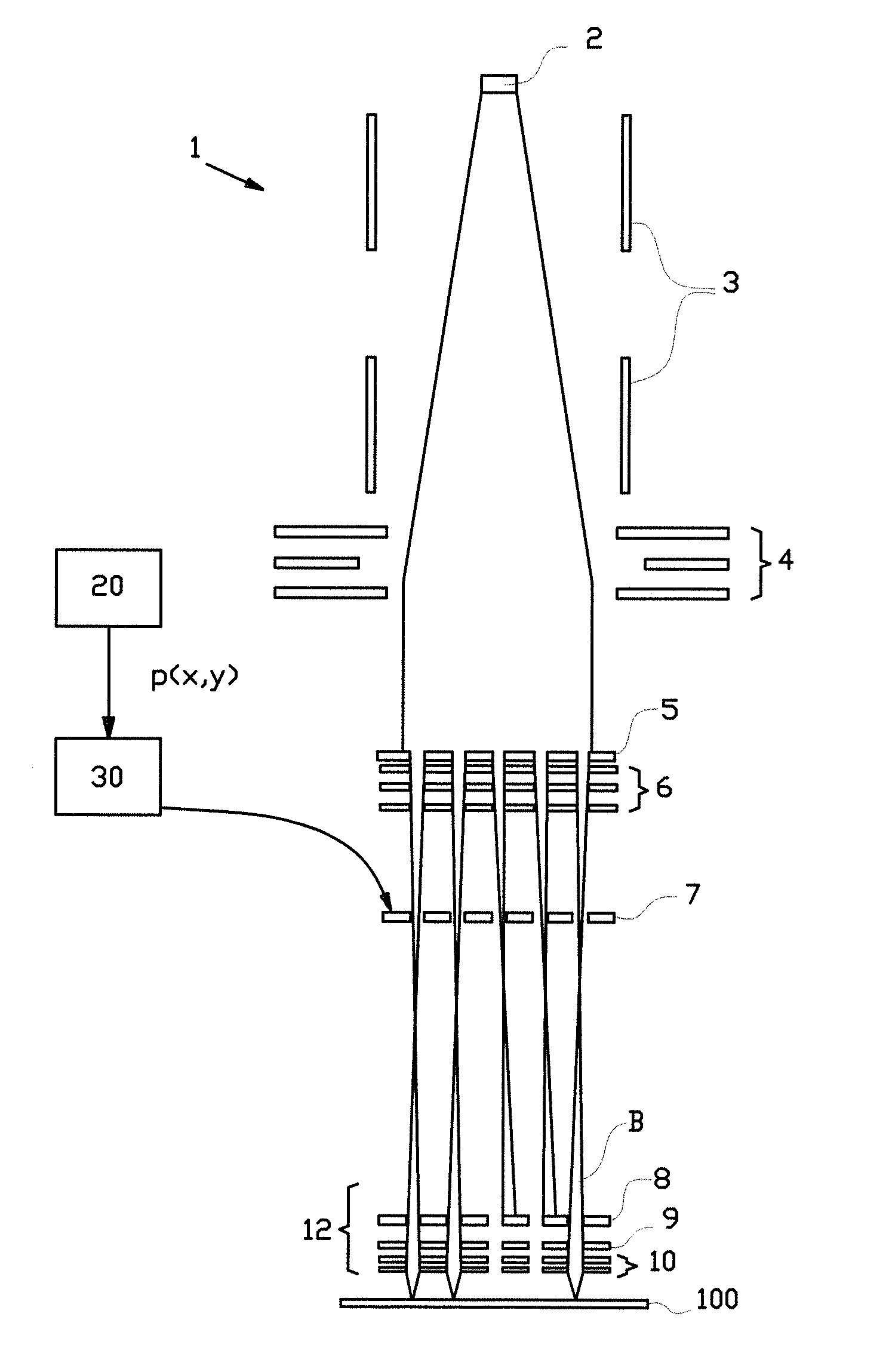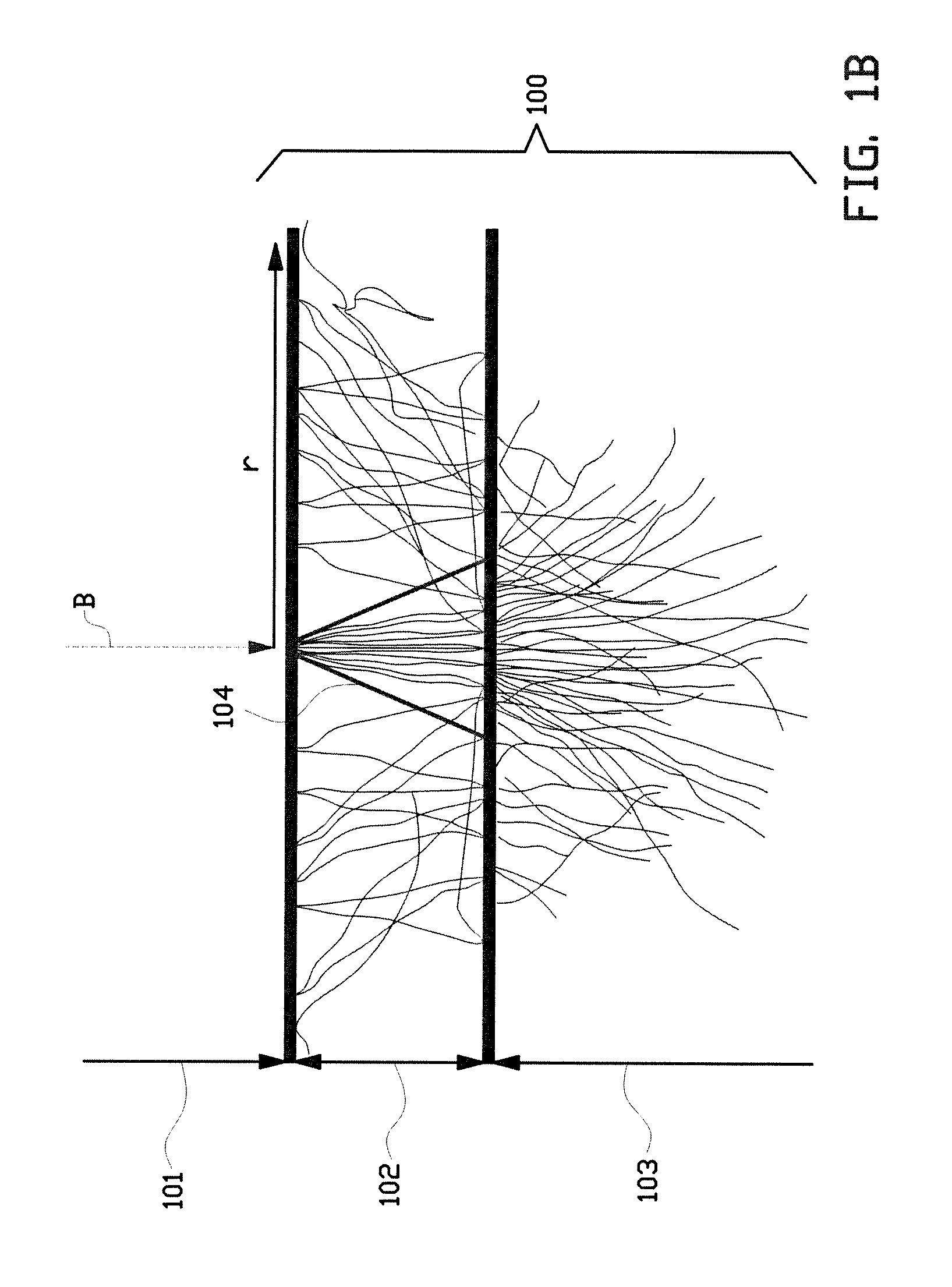Proximity effect correction in a charged particle lithography system
a lithography system and proximity effect technology, applied in the field of proximity effect correction, can solve the problems of numerical instability of conventional methods for numerically approximating a corrected layout pattern, inability to determine the correct layout pattern analytically from the exposed pattern and the base proximity effect function, and inability to accurately calculate high frequency components
- Summary
- Abstract
- Description
- Claims
- Application Information
AI Technical Summary
Benefits of technology
Problems solved by technology
Method used
Image
Examples
Embodiment Construction
[0074]FIG. 1A schematically shows a multi-beamlet charged particle lithography system 1 according to the present invention. The system comprises a charged particle beam source 2 which emits a charged particle beam which traverses a double octopole 3 and collimator lens 4 before impinging on an aperture array 5. The aperture array then splits the beam into a multitude of charged particle beams which are condensed by condenser array 6. At beam blanker array 7 individual beams may be blanked, i.e. may be deflected such that they encounter beam stop array 8 later on in their trajectories instead of passing through apertures in beam stop array 8. An electronic processor 30 is arranged for receiving, from a digital storage 20, a digital layout p(x,y) of a pattern to be transferred to the target, and for calculating a corrected layout pattern which compensates at least partially for the proximity effect as described in more detail below. The electronic processor comprises a controller whic...
PUM
 Login to View More
Login to View More Abstract
Description
Claims
Application Information
 Login to View More
Login to View More - R&D
- Intellectual Property
- Life Sciences
- Materials
- Tech Scout
- Unparalleled Data Quality
- Higher Quality Content
- 60% Fewer Hallucinations
Browse by: Latest US Patents, China's latest patents, Technical Efficacy Thesaurus, Application Domain, Technology Topic, Popular Technical Reports.
© 2025 PatSnap. All rights reserved.Legal|Privacy policy|Modern Slavery Act Transparency Statement|Sitemap|About US| Contact US: help@patsnap.com



